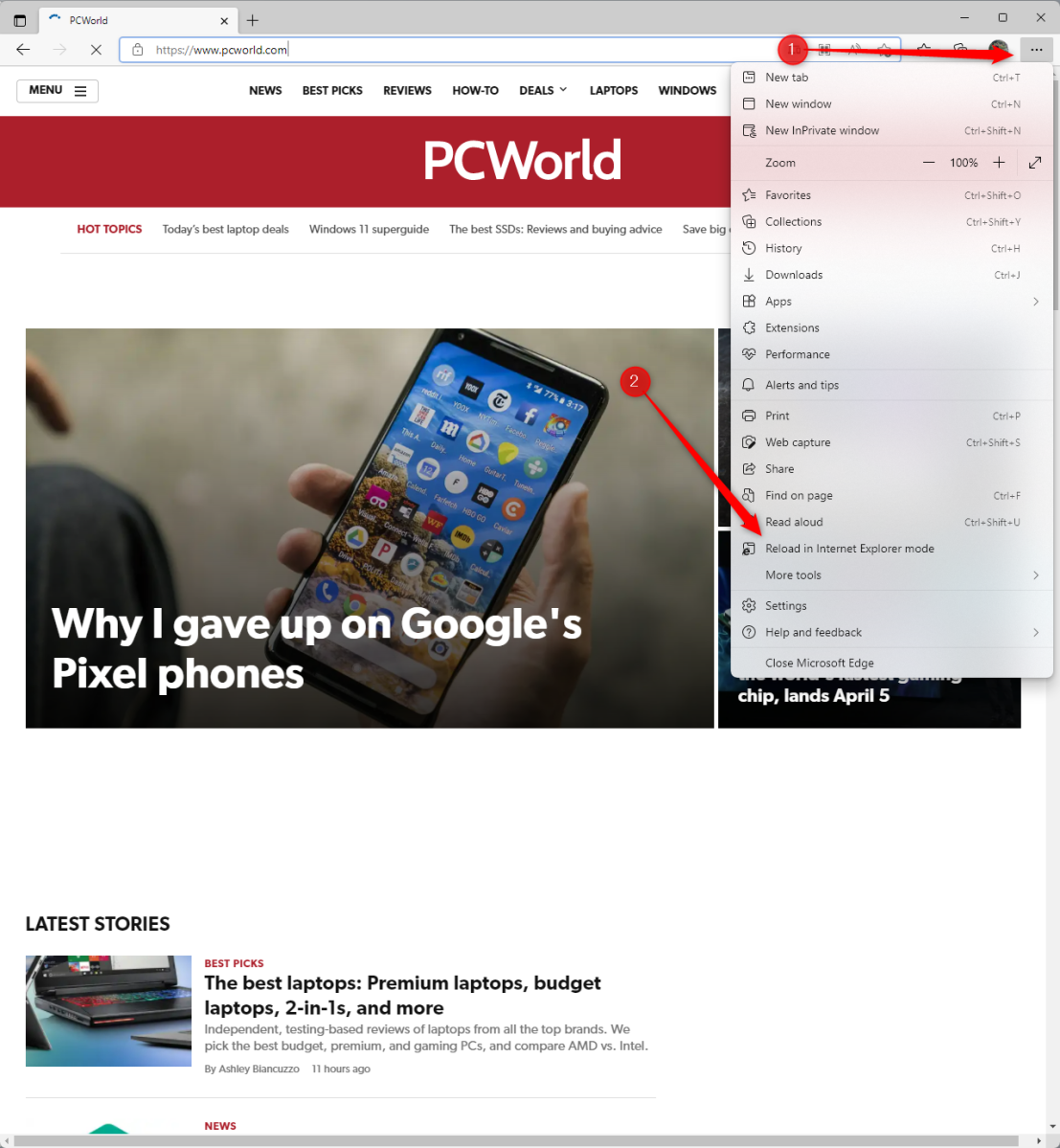The day has finally arrived: Microsoft has killed off Internet Explorer. Or has it? The answer to that is: well, sort of.
Microsoft has said for years that it plans to replace the venerable Internet Explorer browser in favor of a more secure option: Microsoft Edge. Today, IE11 ends support for most users, which means that IE won’t receive any additional support or patches going forward. If Internet Explorer is discovered to be vulnerable to malware, for example, you’re on your own.
But who will be affected by Microsoft’s decision, and what can you do about it? We have the answers below.
Here’s the big picture: For years, Microsoft has maintained Internet Explorer alongside Microsoft Edge. But just like the tale of the three pigs, some of the pigs have lived in the house of straw (Internet Explorer), while others have lived in the house of bricks (Microsoft Edge). Like a good landlord, Microsoft has continually patched Internet Explorer, sealing up the cracks and shoring up the foundation. But no matter what, IE will always be a house of straw. All Microsoft is doing is evicting its residents to something it believes it will be safer to live in. That’s essentially the same rationale as it used to establish the hardware requirements for Windows 11, incidentally.
The vast majority of Windows PCs do not use Internet Explorer, so most people won’t be affected whatsoever by its death. In the United States, just 1.98 percent of American PCs used IE in May, according to Statcounter. Still, with an estimated installed base of roughly 400 million to 450 million PCs, about 9 million PCs will be affected by Microsoft’s decision — equal to roughly the population of New York City.
What’s happening to Internet Explorer

Internet Explorer’s desktop application will be retired on Windows 10 PCs beginning today, June 15, 2022. Essentially, that means Microsoft is killing IE on the vast majority of consumer PCs. (Internet Explorer is not available on Windows 11.) But Microsoft is not ending support for Internet Explorer on Windows 8.1, Windows 7’s Extended Security Updates for businesses, and the business versions of Windows 10 and Windows Server. It’s likely (if not certain) that Microsoft will end support for Internet Explorer for those operating systems at some point in the future, but not now.
If your PC is affected, does that mean that IE will immediately stop working? No, it does not. Instead, Microsoft will retire IE in two phases: first, devices will be “progressively redirected” from IE to Microsoft’s built-in browser, Microsoft Edge, over the next few months. (Microsoft says that won’t happen for all devices all at once, though its guidance is geared toward businesses.) That will mean two things, according to Microsoft. First, your taskbar’s Internet Explorer icon will instead redirect to Microsoft Edge; and second, a “reload in IE Mode” button will be added to the taskbar, too.
Following that, however, Microsoft will permanently disable the IE application via a normal Windows Update. When that occurs, it will be the final nail in the coffin for Internet Explorer. However, Microsoft isn’t saying when that will happen.
Meet Edge’s IE Mode
There is a stopgap: IE Mode for Microsoft Edge, which can be accessed via the Settings menu within Microsoft Edge. Essentially, IE Mode places a secure, sandboxed version of Internet Explorer within Edge, which can be used by corporations and consumers alike to access sites in IE, either because of corporate requirements or just plain familiarity. But Microsoft basically feels that Edge is a better tool to access those sites, anyway.

Microsoft
IE Mode for Edge will be phased out, too
What’s somewhat new is that Microsoft plans to end support for Edge’s IE Mode in the future, too. We don’t have a comprehensive picture of how this all works, but here’s what we do know: Microsoft will end support for IE Mode within Windows 10 2019 LTSC on Jan. 9, 2029; for Windows 8.1 on Jan. 10, 2023; and Windows 7 (Extended Support) on Jan. 15, 2023. However, since Microsoft has not given a timeline for phasing out the IE11 app for both Windows 8.1 and Windows 10, we can’t be absolutely certain that you won’t be able to access IE on Windows 7 and 8.1 after those cutoff dates, too.

IDG / Marshall Gunnell
Microsoft’s support page says that it will withdraw IE Mode support for Windows 10 when support for the operating system ends. In this case, Windows 10’s consumer version should end support on Oct. 14, 2025. Microsoft will also announce an end of support about a year before the support timeframe expires.
The bottom line? Microsoft wants you to move to a safer browser. Naturally, it would prefer that you adopt Microsoft Edge instead.
The reality, however, is that virtually all modern browsers are free, safe, and convenient to adopt. Many include procedures to migrate bookmarks, passwords, and more from an older browser like Internet Explorer through to a new browser like Google Chrome, Firefox, Vivaldi, Brave, and others. We’ve been encouraging you to switch browsers for a while now, and the imminent demise of Internet Explorer is just another great reason to switch.
